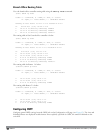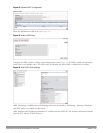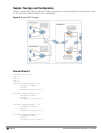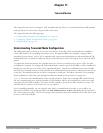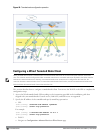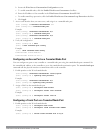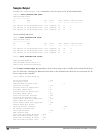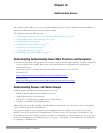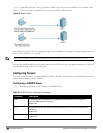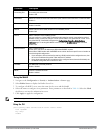
DellPowerConnectW-SeriesArubaOS6.2 | User Guide TunneledNodes | 163
Chapter 11
Tunneled Nodes
This chapter describes how to configure a Dell tunneled node, also known as a wired tunneled node. Dell tunneled
nodes provide access and security using an overlay architecture.
This chapter describes the following topics:
l "Understanding Tunneled Node Configuration" on page 163
l "Configuring a Wired Tunneled Node Client" on page 164
l "Sample Output" on page 166
Understanding Tunneled Node Configuration
The Dell tunneled node connects to one or more client devices at the edge of the network and then establishes a
secure GRE tunnel to the controlling concentrator server. This approach allows the controller to support all the
centralized security features, such as 802.1x authentication, captive-portal authentication, and stateful firewall. The
Dell tunneled node is required to handle only the physical connection to clients and support for its end of the GRE
tunnel.
To support the wired concentrator, the controller must have a license to terminate access points (APs). No other
configuration is required. To configure the Dell tunneled node, you must specify the IP address of the controller and
identify the ports that are to be used as active tunneled node ports. Tunnels are established between the controller
and each active tunneled node port on the tunneled node. All tunneled node units must be running the same version
of software. The tunneled node port can also be configured as a trunk port. This allows customers to have multiple
clients on different VLANs that come through the trunk port instead of having clients on a single vlan.
Figure 46 shows how the tunneled node fits into network operations. Traffic moves through GRE tunnels between
the active tunneled node ports and the controller or Dell controllers. Policies are configured on a master server and
enforced on the local Dell controllers. The master and the controller can run on the same or different systems. The
tunneled node can connect to the master, but it is not required.
On the controlling controller, you can assign the same policy to tunneled node user traffic as you would to any
untrusted wired traffic. The profile specified by the aaa authentication wired command determines the initial
role, which contains the policy. The VLAN setting on the concentrator port must match the VLAN that will be used
for users at the local controller.



